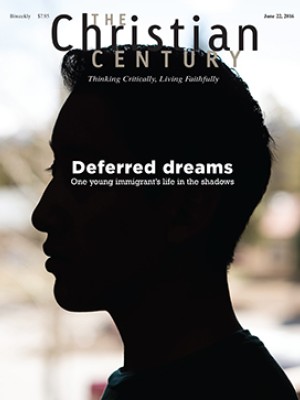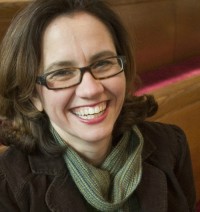Varieties of new churches

I attend a new church in a part of town that some consider bad. I find it lovely, with sprawling 1920s bungalows that were built back when a middle-class family could buy an Arts and Crafts kit house from Sears. The neighborhood has experienced the waning and waxing of generations of racism and gentrification. When people of color moved into the homes, white people moved out to the suburbs. When the neighborhood diversified, economic development slowed because the city neglected to offer perks for businesses and investment for schools. This lack of attention also meant that the neighborhood avoided teardowns and new construction. Now, as these vintage homes turn antique, younger residents who appreciate the ancient oak floors, noise-proof plaster walls, and ethnic diversity are moving in.
Our local presbytery thought the area would be a good place for a new worshiping community, so it hired an evangelist to start one. Across the street, an evangelical church erected a giant facility as a satellite for its multisite congregation. The modern, metal slopes of the building contrast sharply with the historic homes, especially at night, when blue and purple lights illuminate it.
Read our latest issue or browse back issues.
The lead pastor doesn’t visit the church often. Instead, the congregation projects a live video image of him preaching. When he does visit the neighborhood, a security company made up of off-duty sheriffs blocks the road with traffic cones, and the pastor drives up in a Cadillac SUV. The church locks a giant steel fence in order to keep the facility safe. People flock to the church.
The two churches are a contrast in style, substance, and mission. We both love Jesus and long to love our neighbors, but that love has taken distinct shapes. Our ancient, formerly Methodist church structure is filled with people from the neighborhood. They gather in repurposed Sunday school rooms at all times of the day and night in order to take care of elderly residents, provide after-school programs for teens, run a free store, create art in studio spaces, and learn English as a second language. Each weeknight we eat with neighbors during hospitality hours, and in the summer we help host a Latin festival in the parking lot.
The two churches remind me of the variety of ways that a congregation can begin. In the last decade, evangelicals have specialized in multisite churches, where one congregation starts a sort of franchise, duplicating its worship experience at another site with the use of technology. (Some denominational churches also use this model when a pastor serves more than one traditional parish in a rural area.) The advantage of this model is that the new church often has a substantial core group and more investment of time, talent, and money.
Each congregation has a start-up narrative that can be as different as our human birth stories, but we also have commonalities. The Ecumenical Partners in Outreach surveyed 260 ministries that have started since 2006 and found that they were initiated by a group of laypeople (33 percent), a denominational body (33 percent), an individual pastor (22 percent), or a congregation (17 percent). The starting point often depended on the denomination.
A denominational body began half of the new churches in the Presbyterian Church (U.S.A.) (49 percent) and the Reformed Church in America (50 percent), and the United Church of Canada’s denominational bodies began 42 percent of their new worshiping communities. When a denomination begins a new church, it has the strength of connecting to a larger mission and vision and can tap into the legacies of closed churches, allowing the faith to take new form and shape in a new generation.
The Presbyterian Church (U.S.A.) had the most congregations initiated by an existing church (30 percent), but it was least likely to have a church started by an individual (2 percent). In the Disciples of Christ, individual pastors began a majority of new congregations (62 percent) while a group of lay leaders began 38 percent of congregations.
Most congregations in the Evangelical Lutheran Church in America were started by the denomination (31 percent) or a group of laypeople (31 percent). But one church started 20 percent of the churches. The United Church of Christ starts new communities with the denomination (24 percent), a group of laity (26 percent), pastors (38 percent), or another congregation (12 percent).
Is it good to have all of these ways of starting churches, empowering as many people as possible to begin them? What makes the Disciples so effective at training innovative pastors? Could we replicate programs like Bethany Fellows, which helps young ministers transition from seminary? Does a denomination’s polity encourage or discourage new church starts? Does a church’s bureaucracy make it difficult to welcome immigrant congregations? Why do groups of laity find it easier to organize congregations in some denominations as opposed to others?
Given the church’s abundance of resources and creativity, we know that new communities can start in different ways and serve different people. Whether participants gather in a modern building to watch a pastor on a screen or eat a meal with their pastor every day, they are living and expressing the love of God and neighbor.






